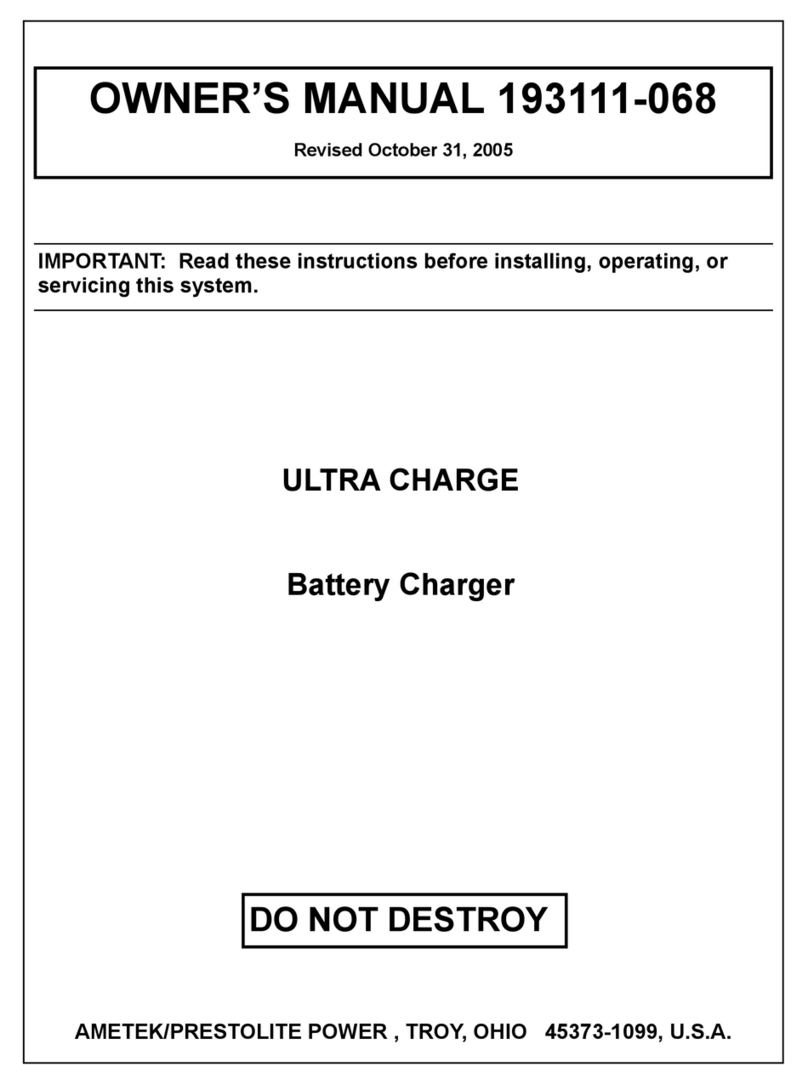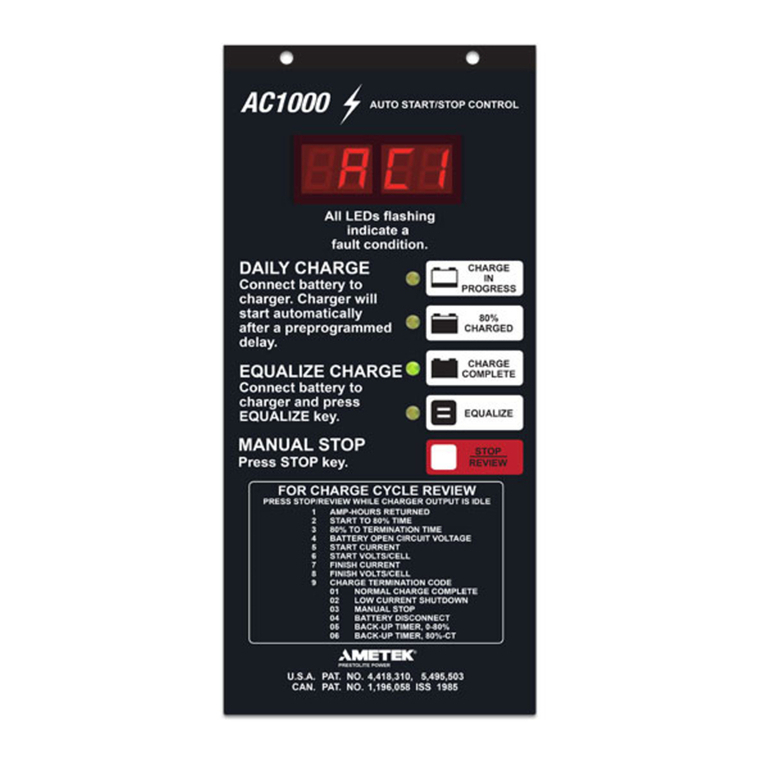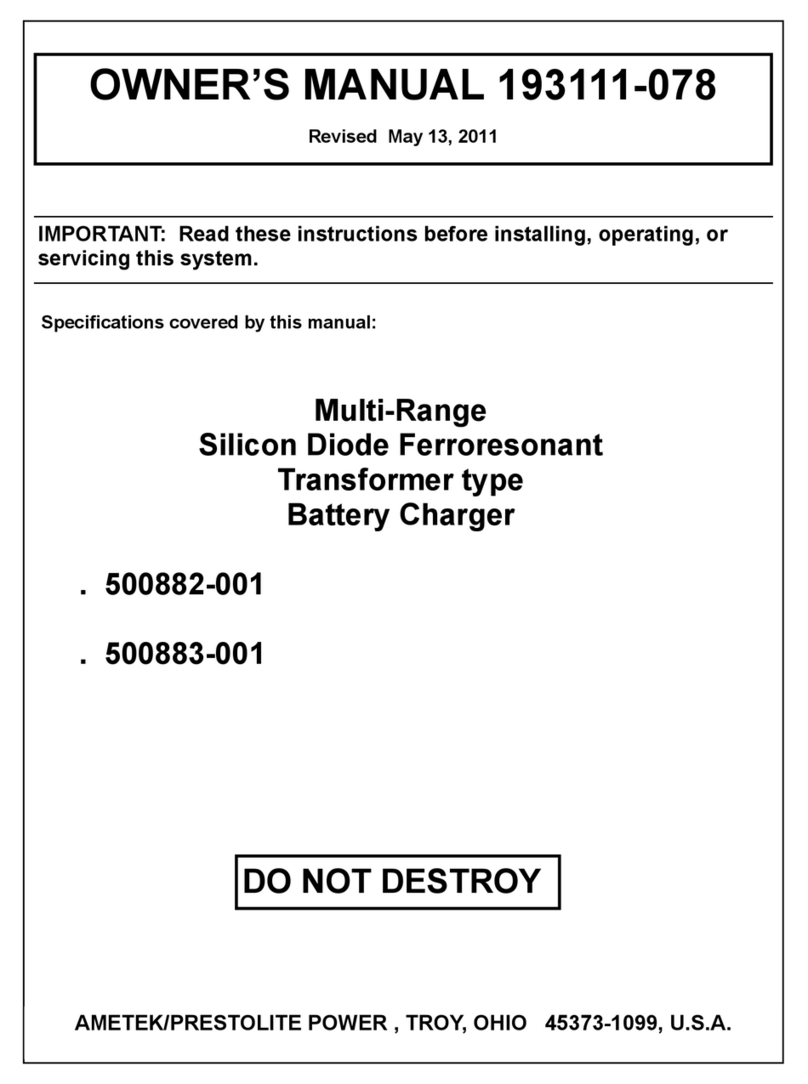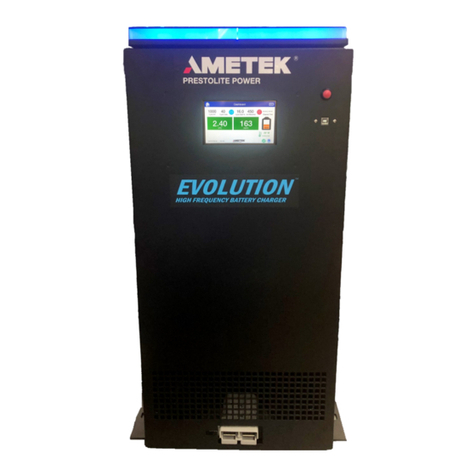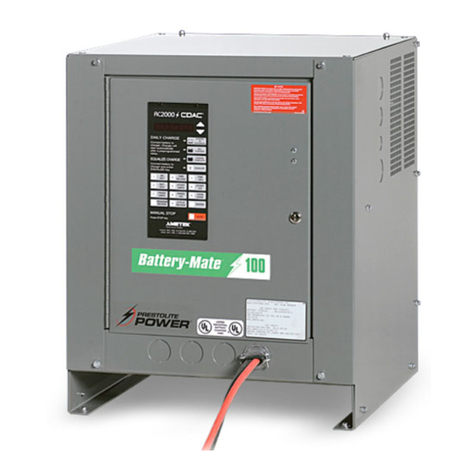
FOR OPERATION OF BATTERY
CHARGING EQUIPMENT
IMPORTANT – READ AND
UNDERSTAND THESE
INSTRUCTIONS. DO NOT
LOSE THEM. ALSO READ
OPERATING/INSTRUCTION
MANUAL BEFORE
INSTALLING, OPERATING,
OR SERVICING THIS
EQUIPMENT.
A. General
Battery charging products can cause serious
injury or death, or damage to other equipment or
property, if the operator does not strictly observe
all safety rules and take precautionary actions.
Safe practices have developed from past experience
in the use of charging equipment. These practices
must be learned through study and training before
using this equipment. Anyone not having
extensive training in battery charging practices
should be taught by experienced operators.
Only qualified personnel should install, use, or
service this equipment.
B. Shock Prevention
Bare conductors, or terminals in the output circuit,
or ungrounded, electrically-live equipment can
fatally shock a person. To protect against shock,
have competent electrician verify that the
equipment is adequately grounded and learn what
terminals and parts are electrically HOT.
The body’s electrical resistance is decreased when
wet, permitting dangerous current to flow through the
body. Do not work in damp area without being
extremely careful. Stand on dry rubber mat or dry
wood and use insulating gloves when dampness or
sweat cannot be avoided. Keep clothing dry.
1. Installation and Grounding of Electrically Powered
Equipment – Electrical equipment must be installed
and maintained in accordance with the National
Electrical Code, NFPA 70, and local codes. A
power disconnect switch must be located at the
equipment. Check nameplate for voltage and
phase requirements. If only 3-phase power is
available, connect single-phase equipment to only
two wires of the 3-phase line. DO NOT CONNECT
the equipment grounding conductor (lead) to the
third live wire of the 3-phase line as this makes the
equipment frame electrically HOT, which can cause
a fatal shock.
If a grounding lead (conductor) is part of the power
supply cable, be sure to connect it to a properly
grounded switch box or building ground. If not part
of the supply cable, use a separate grounding lead
(conductor). Do not remove a ground prong from
any plug. Use correct mating receptacles. Check
ground for electrical continuity before using
equipment.
The grounding conductor must be of a size equal
to or larger than the size recommended by Code or
in this manual.
2. Charging Leads – Inspect leads often for damage
to the insulation. Replace or repair cracked or worn
leads immediately. Use leads having sufficient
capacity to carry the operating current without
overheating.
3. Battery Terminals – Do not touch battery terminals
while equipment is operating.
4. Service and Maintenance – Shut OFF all power at
the disconnect switch or line breaker before
inspecting, adjusting, or servicing the equipment.
Lock switch OPEN (or remove line fuses) so that
the power cannot be turned ON accidentally.
Disconnect power to equipment if it is to be left
unattended or out of service.
Disconnect battery from charger. Measure voltage
on capacitors and discharge through an insulated
screwdriver if there is any voltage reading.
Keep inside parts clean and dry. Dirt and/or
moisture can cause insulation failure. This failure
can result in high voltage at the charger output.
SAFETY INSTRUCTIONS AND WARNINGS
193111-038
SAFETY INSTRUCTIONS AND WARNINGS
April 3, 2000 1-1
